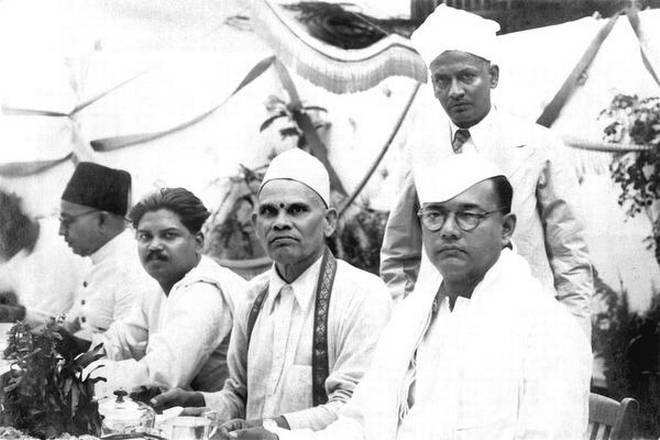That was a question I was recently asked in connection with a reference I had made to Umda Bagh and its links with education in the city for nearly 125 years. Good question, and off I went ahunting for information.
Into the Umda Bagh campus moved c.1895 the Madrasa-I-Azam, the chief Muslim school in the South and which was established in 1849. This developed partially into a Government Muhammadan College with its own buildings in 1934.
In 1948, the College was reconstituted as the Government Arts College for Men. The College moved to Nandanam in 1972 and a women’s college opened in its stead in 1974. This was named the Quaid-E-Millat Government College for Women, leaving many a student puzzling over the prefixed name, which I’m told means ‘Leader of the Nation’.
A Tirunelveli Rowther, Mohammed Ismail went into business in the 1920s and became a leader in the worlds of leather and Madras commerce. That leadership led him into politics, in which he had shown interest from when, as a 13-year-old, he started in 1909 the Young Muslim Society in Tirunelveli.
Nine years later, he founded the Council of Islamic Scholars and joined the Indian Muslim League. In 1946, he led the League’s Madras unit in the Assembly elections and became Leader of the Opposition. He was also elected to the first Lok Sabha, which simultaneously served as the Indian Constituent Assembly. And, an intriguing election that year was as the founding President of the Madras State Mutton Dealers’ Association, which he remained till his death 26 years later.
When Pakistan was born in 1947, the Muslim League divided and an Indian Union Muslim League came into being. Mohammed Ismail was elected its first President. After serving in the Rajya Sabha from 1952 to 1958, he moved into Kerala politics with States’ Reorganisation in 1956. Leading the IUML, he won Lok Sabha seats in 1962, 1967 and 1971. He died a year after his last election, revered in both Tamil Nadu and Kerala as the Quaid-E-Millat, a leader who ensured communal harmony. Interestingly, his education had been in Hindu, Catholic and Protestant schools and colleges!
Perhaps the greatest tribute paid to him was by Congress Chief Minister M Bhaktavatsalam who, describing his dignified and conciliatory behaviour in the Legislature, said he was “a model for all Opposition leaders”.
————–
When the postman knocked…
V Mahalingam writes (Miscellany, April 17): “N Kannayiram went to the West Indies as a replacement for G Kasturirangan of Mysore who cried off because of groin injury and not as replacement for CD Gopinath.
Also CDG didn’t opt out as he was not happy with the cricket board’s ways. He pulled out as he was suffering from collar bone injuries and he was replaced by L Adisesh of Mysore who also pulled out. Totally there were four replacements before the tour.”
With this column’s word length now abbreviated, I don’t have the luxury of elaboration. But even then, there was no reason to link two entirely different sentences about Kannayiram and Gopinath except for the fact that they were adjacent to each other. Juxtaposition is not the equivalent of replacement! More interesting is my correspondent saying it was “collarbone injuries” that made Gopinath skip the tour.
Reporting a long interview with Gopinath for the book Office Chai, Planter’s Brew — Gopinath approving every word of the final text — this writer stated: “(In 1952) Gopinath, being South Indian, was ‘rather strangely called Madrasi in a rather contemptuous way’ by other members of the team. This was an era when cricket essentially meant Bombay — and in Gopinath’s words, ‘…it was almost as if, if you came from Madras, you had no business to play cricket…’ He goes on that around then Gordon Woodroffe’s offered him a job — it was a time when the first Indians were being recruited by British firms — and he was mulling over it because he felt the remuneration was inadequate given his academic and sporting record.
But his father, an old Imperial Bank hand, pointed out he’d get fair treatment in a British firm and could go far (he did; he became its first Indian Chairman). The interview then records, “Musing on the advice and his issues with (Indian) cricket, Gopinath decided to refuse the West Indian tour.” No mention of collar bone injuries anywhere.

Ramesh Kumar, who’s kept the Beehive Foundry name going in its original Oakes & Co. premises on Popham’s Broadway (Miscellany, June 2, 2014), now Prakasam Salai, sends me today’s picture of yesteryear. It’s of Subhas Chandra Bose being hosted at tea at the Beehive premises on September 3, 1939. With him are Kowtha Suryanarayana Rao, the founder of the group that owns the premises, and his partner C Audikesavalu Chettiar, Ramesh Kumar’s grandfather. To Rao’s right is a person whom I wonder how many recognise, despite his being a well-known name in Tamil Nadu. He is Pasumpon Muthuramalinga Thevar.
Rao founded the Swadharma Swaarajya Sangh (Orthodox National League) in 1913 for the “revival of the declining spiritual and cultural values of Bharateeya life, dharma and religion”, I wonder how much Bose or Thevar had in common with it? I also wonder, given the date of the felicitation, whether Bose fled to Germany from Madras; that was the day India was dragged into a World War.
The chronicler of Madras that is Chennai tells stories of people, places and events from the years gone by and, sometimes, from today
source: http://www.thehindu.com / The Hindu / Home> Society> History & Culture / Madras Miscellany / by S. Muthiah / May 01st, 2017